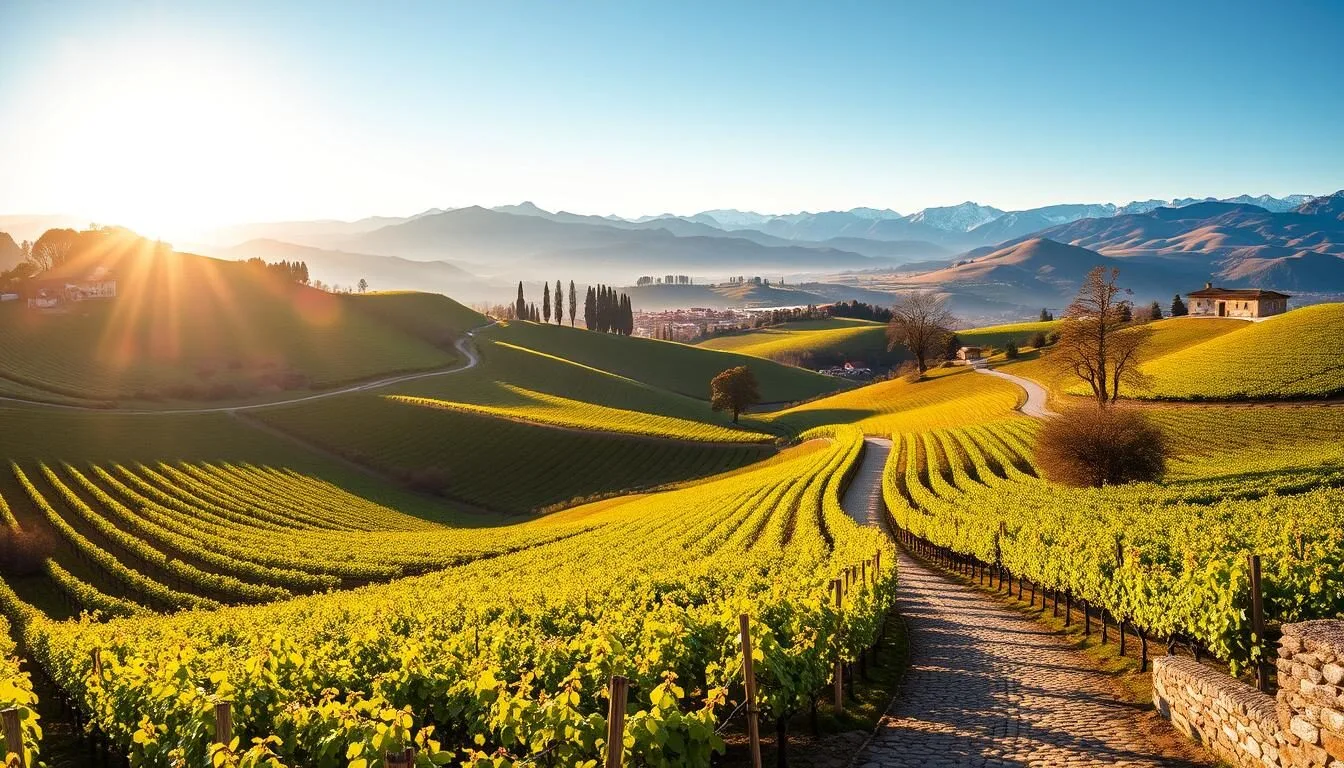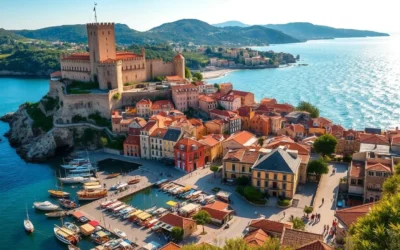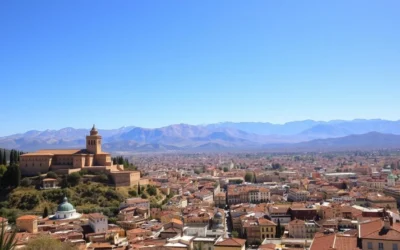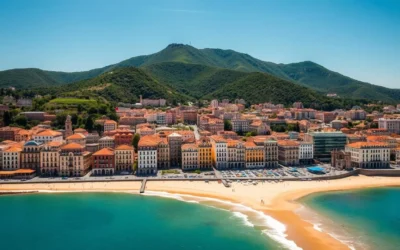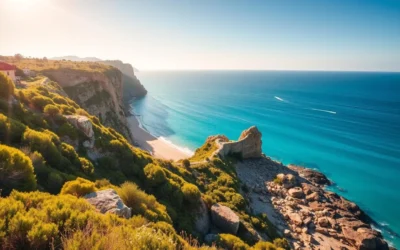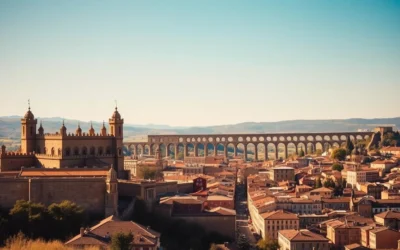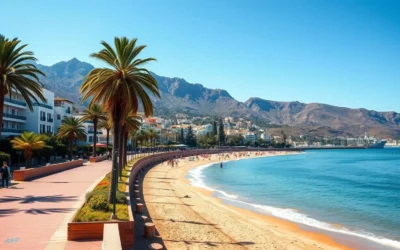Did you know that La Rioja is home to over 400 wineries, producing some of the world’s most renowned wines? As you plan your trip to this beautiful region in northern Spain, you’ll discover that there’s more to Rioja than just its exceptional wine.
You’ll be treated to breathtaking landscapes, rich cultural heritage, and stunning medieval towns. This guide will take you through the best experiences in Rioja, from wine tasting in world-renowned wineries to exploring UNESCO World Heritage sites. Whether you’re visiting for a weekend getaway or as part of a longer Spanish adventure, Rioja is a perfect destination for a road trip, with diverse attractions packed into a relatively compact region.
Discovering La Rioja: Spain’s Premier Wine Region
La Rioja, Spain’s premier wine region, is a treasure trove of experiences waiting to be uncovered. As you delve into this beautiful region, you’ll find that there’s more to La Rioja than its renowned wines.
The Three Wine Regions of Rioja
La Rioja is divided into three distinct wine regions: Rioja Alta, Rioja Alavesa, and Rioja Baja. Each region has its unique characteristics, shaped by differences in climate, soil, and altitude. Rioja Alta is known for its aged wines and gentle climate, while Rioja Alavesa produces wines with a distinct minerality due to its clay soils. Rioja Baja, with its warmer climate, contributes to the production of robust wines. Understanding these regions helps you appreciate the diversity of Rioja’s wines.
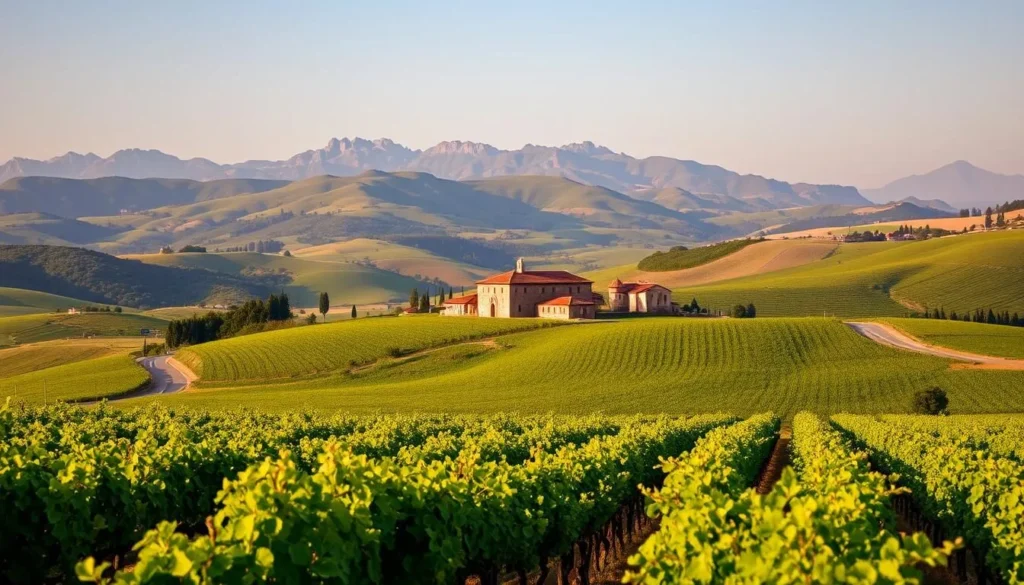
Beyond the Vineyards: What Makes Rioja Special
Beyond its famous wineries, La Rioja is a region rich in history, culture, and natural beauty. The region’s stunning landscapes, from the Sierra Cantabria mountains to the Ebro River valley, offer ample opportunities for outdoor activities. You can explore ancient castles, monasteries, and medieval towns made from distinctive ochre sandstone. La Rioja is also part of the famous Camino de Santiago pilgrim route, adding to its historical and cultural significance. The region’s exceptional gastronomy, with traditional Riojan cuisine complementing its famous wines, is another reason to visit.
The combination of natural beauty, rich heritage, and world-class wine makes La Rioja a unique destination. Whether you’re a wine enthusiast or simply looking to explore a new region, La Rioja has something to offer.
How to Get to and Around Rioja
To experience the best of Rioja, you’ll first need to figure out how to get there and get around. The region is well-connected, making it relatively easy to plan your trip.
Nearest Airports and Train Connections
The nearest airports are Bilbao and Zaragoza, both of which offer connections to major Spanish cities and some international destinations. You can also take the train to Logroño, the capital of La Rioja, which is well-linked to cities like Madrid and Barcelona. From there, you can arrange your onward travel.
Renting a Car vs. Guided Tours
When it comes to getting around Rioja, you have two main options: renting a car or joining a guided tour. Renting a car gives you the flexibility to visit wineries and towns at your own pace. However, if you plan to wine taste, having a designated driver is crucial. On the other hand, guided wine tours offer expert knowledge, pre-arranged tastings, and a hassle-free experience. Many tours operate from nearby cities like Bilbao and San Sebastián, making them a good option if you’re short on time.
- Renting a car provides maximum flexibility for your itinerary.
- Guided tours offer expert insights and pre-arranged wine tastings.
- Consider your priorities: flexibility or convenience?
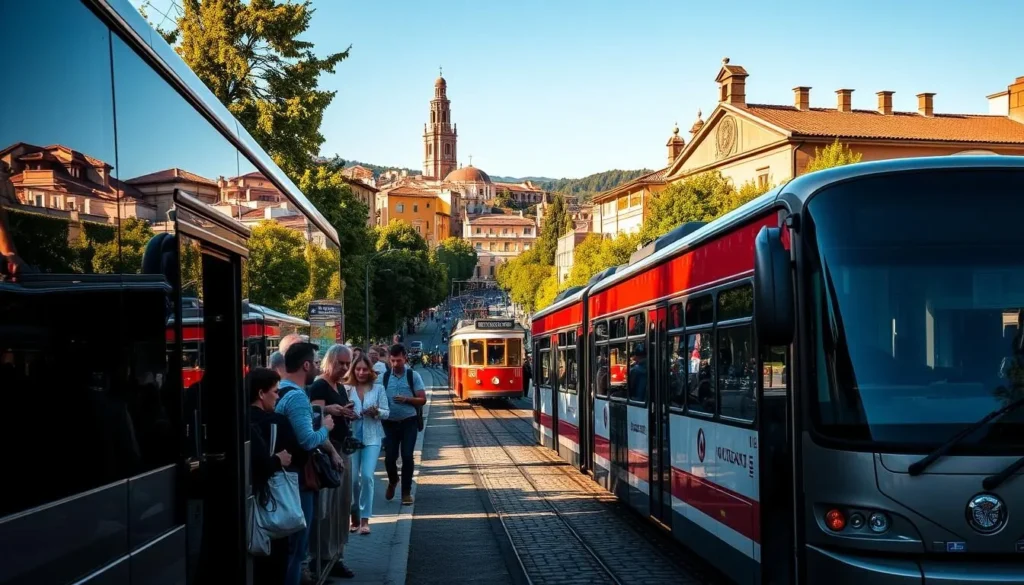
Best Time to Visit Rioja
To make the most of your trip to Rioja, consider the seasonal highlights and weather conditions. The region’s climate is characterized by warm summers and mild winters, making it a pleasant destination for wine enthusiasts throughout the year.
Seasonal Highlights and Weather
Rioja experiences a Mediterranean climate with continental influences. The summer months can be warm, while winters are generally mild. Spring and autumn are particularly pleasant, with mild temperatures ideal for exploring the vineyards. During your visit, you can enjoy the scenic beauty of the region, from the blooming flowers of spring to the harvest festivities of autumn.
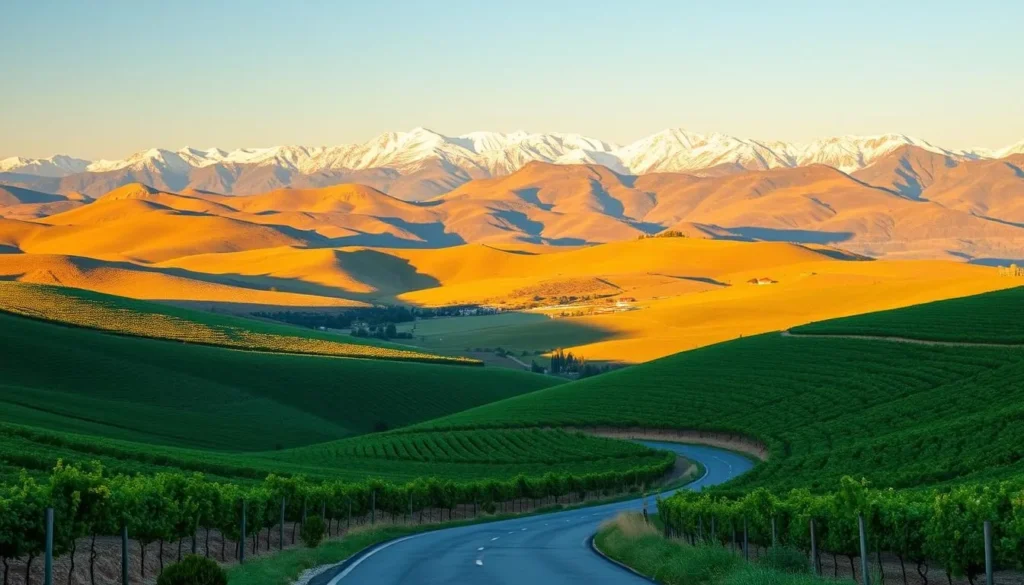
Wine Harvest Season (September-October)
The wine harvest season, typically occurring in late September and October, is considered by many to be the best time to visit Rioja. This period is marked by grape-picking experiences at some wineries, harvest festivals, and a lively atmosphere throughout the region. Although it’s a popular time, Rioja rarely feels overcrowded, making it an ideal destination even during peak season. You can enjoy the festivities over several days, immersing yourself in the local culture and wine production.
Haro: The Wine Capital of Rioja
As the wine capital of Rioja, Haro offers an unforgettable experience for wine enthusiasts and tourists alike. This charming town is home to some of the region’s most prestigious wineries, offering a blend of tradition, history, and innovation.
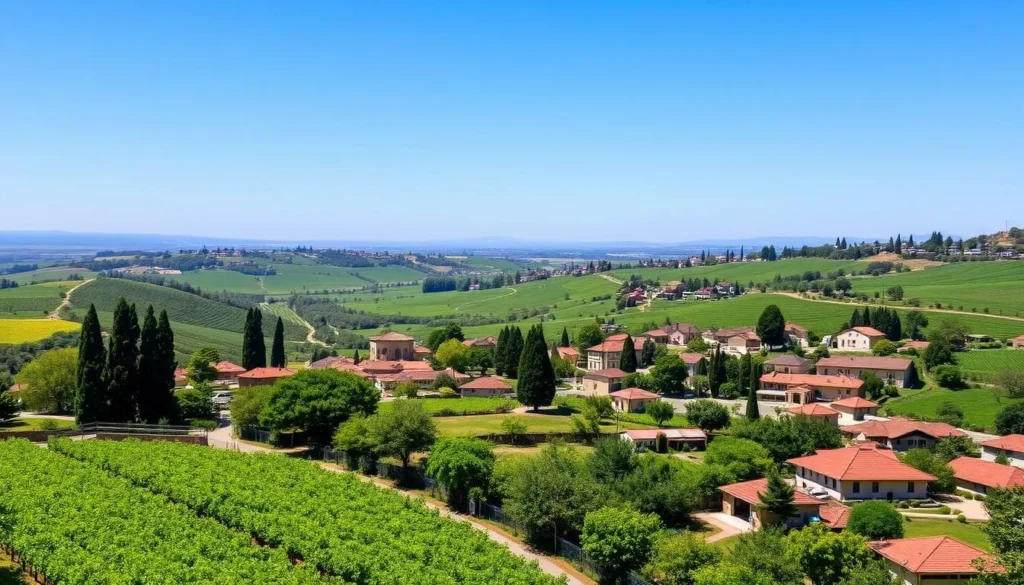
Barrio de la Estación: The Station District
Barrio de la Estación, or the Station District, is a historic area in Haro that has become a hub for wineries and wine bars. Visitors can explore the local bodegas, enjoy wine tastings, and savor local cuisine in a charming setting. The district’s historic charm and modern amenities make it an ideal place to experience Haro’s wine culture.
Many of the wineries in this district, such as Gómez Cruzado, offer guided tours and intimate tasting sessions, providing a deeper understanding of the wine-making process and the region’s history.
Top Wineries to Visit in Haro
Haro is home to numerous exceptional wineries that offer unique visitor experiences. Starting with Gómez Cruzado, one of the town’s oldest wineries, visitors can enjoy informative tours and tastings. Other notable wineries include CVNE, known for its beautiful tree-shaded terrace and historic cellars, and TIHOM, a modern winery with contemporary architecture and innovative wines.
Additional recommendations include Muga, famous for its traditional methods and wooden vats, and López de Heredia, known for its exceptionally long-aged wines. Many of these wineries have wine bars where visitors can drop in for tastings and small plates without prior reservation.
Exploring Laguardia: A Medieval Gem
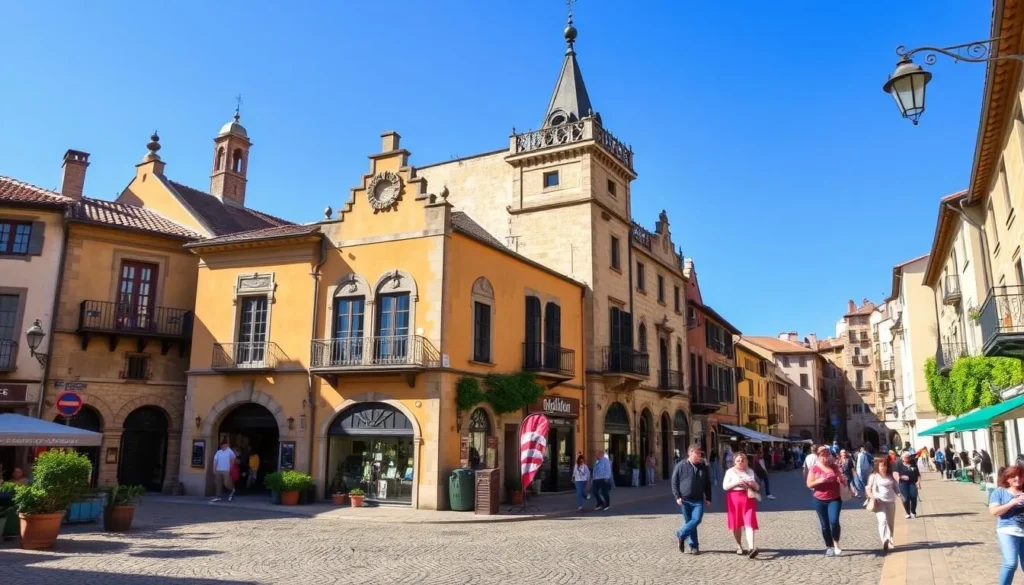
Tucked away in the Rioja Alavesa region, Laguardia is a treasure trove of medieval charm and wine culture. As you wander through its cobblestone streets, you’ll discover a town rich in history and heritage.
Walking the Walled Town
Laguardia’s medieval walls and fortifications are a testament to its rich history. As you walk along the walled town, you’ll experience the charm of this ancient settlement. The maze of cobblestone streets invites you to explore its many hidden corners and historic landmarks.
Underground Wine Cellars and Santa María de los Reyes Church
The town is famous for its network of underground wine cellars, or bodegas, which were originally dug to provide both wine storage and refuge during sieges. Casa Primicia, recognized as the oldest working winery in Spain, offers tours of its historic underground cellars. You can also visit the Church of Santa María de los Reyes, particularly to see its extraordinary polychrome portico, considered one of the finest examples of medieval painted sculpture in Spain. The portico has retained its original 14th-century coloring, making it an exceptionally rare and valuable artistic treasure.
To get a complete cultural experience of Laguardia, it’s recommended to book a guided tour that combines both the underground cellars and the church. This way, you’ll gain a deeper understanding of the town’s history, wine culture, and architectural heritage.
Logroño: Tapas Paradise and Cultural Hub
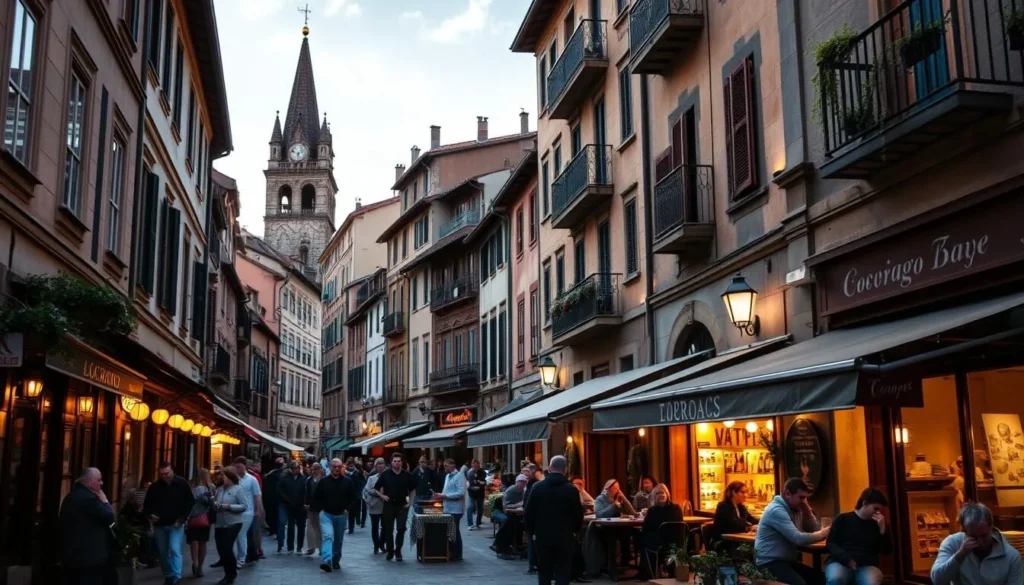
As the administrative capital of La Rioja, Logroño is a must-visit destination that combines rich cultural heritage with a vibrant tapas scene. This lovely city is perfect for spending a day or two, with its colonnaded streets lined with pavement cafés, flowering trees, and pastel-colored Art Nouveau apartments.
Calle Laurel: The Famous Tapas Street
Calle Laurel is the epicenter of Logroño’s tapas culture, offering a wide range of bars and restaurants serving everything from traditional Spanish tapas to innovative culinary creations. As you wander along this famous street, you’ll discover the rich flavors and aromas of local cuisine.
Cultural Attractions in Logroño
Beyond its famous tapas scene, Logroño is home to numerous cultural attractions. The Concatedral de Santa María de la Redonda, located on the Plaza del Mercado, is a must-visit landmark. This beautiful cathedral is surrounded by historic buildings and outdoor cafés, making the Plaza del Mercado a vibrant hub of activity.
Logroño’s connection to the Camino de Santiago pilgrimage route has significantly influenced its development and culture. Visitors can still see backpack-laden hikers trudging along its narrow lanes. A stroll along the Ebro River offers pleasant walking paths and beautiful views of the city. Other notable sites include the Church of Santiago, the Parlamento de La Rioja, and the Puente de Piedra (Stone Bridge).
San Millán de la Cogolla: UNESCO World Heritage
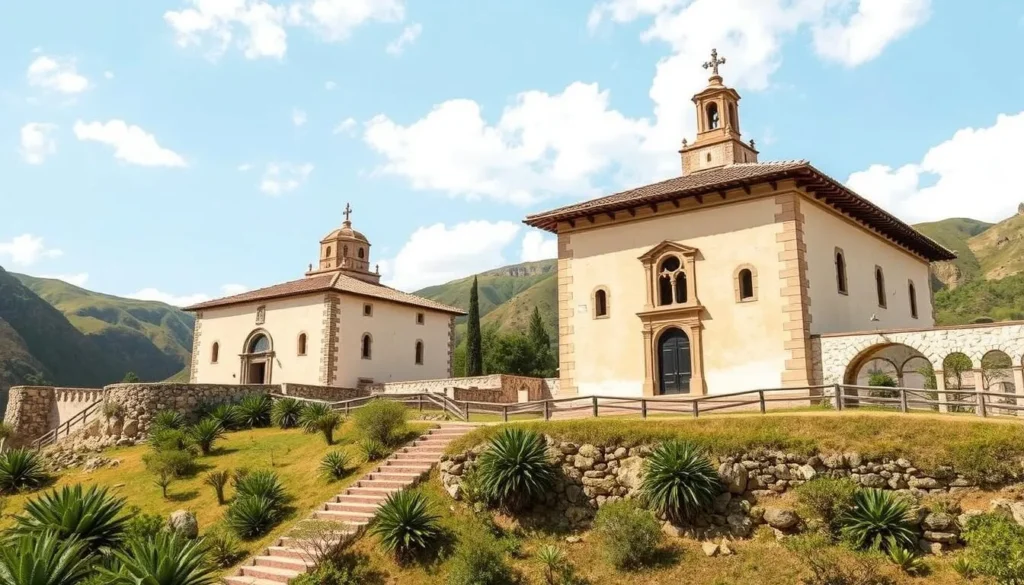
Nestled in the heart of La Rioja, San Millán de la Cogolla is a treasure trove of history and spirituality. This village is home to two magnificent monasteries, Yuso and Suso, which are a testament to the region’s rich cultural heritage.
Yuso and Suso Monasteries: Birthplace of the Spanish Language
The Yuso and Suso monasteries are not only architecturally stunning but also hold significant historical importance. They are considered the birthplace of the Spanish language, making them a fascinating destination for history buffs and linguaphiles alike. The monasteries have been recognized as a UNESCO World Heritage site, acknowledging their cultural and historical significance.
Visiting Tips and What to See
When visiting the monasteries, it’s essential to note that both Yuso and Suso can only be visited as part of guided tours. While Yuso tours are typically conducted in Spanish, Suso offers tours in both Spanish and English. To make the most of your visit, arrive early to secure spots on the Suso tour, especially during high season. Be sure to pick up a printed leaflet to get a deeper understanding of the historical context and significance of the monasteries.
Some of the key features to look out for include the cave where San Millán lived as a hermit and the carved capitals in Suso, as well as the library, sacristy with Flemish triptychs, and ornate choir stalls in Yuso. By understanding the history and significance of these features, you can gain a deeper appreciation for the monasteries and their importance in Spanish culture.
Rioja, Spain: Best Things to Do for Wine Enthusiasts
Rioja, a region steeped in wine tradition, invites visitors to indulge in its world-class wine experiences. From renowned wineries to exceptional wine tastings, Rioja is a paradise for wine lovers.
Marqués de Riscal and Other Architectural Wonders
One of the architectural highlights in Rioja is the Marqués de Riscal winery, known for its stunning architecture designed by Frank Gehry. This winery, along with others in the region, offers not just exceptional wines but also a glimpse into the rich history and culture of Rioja’s wine production. Visitors can explore the vineyards, learn about the wine-making process, and enjoy the unique architectural features of these wineries.
Other wineries, such as Vivanco, boast comprehensive wine museums and modern tasting facilities. At Vivanco, you can enjoy a super-modern tasting room with a wooden relief of vine leaves carved into the ceiling and sweeping views. The experience is further enhanced by guided tours that focus on the vines and the way they’re grown.
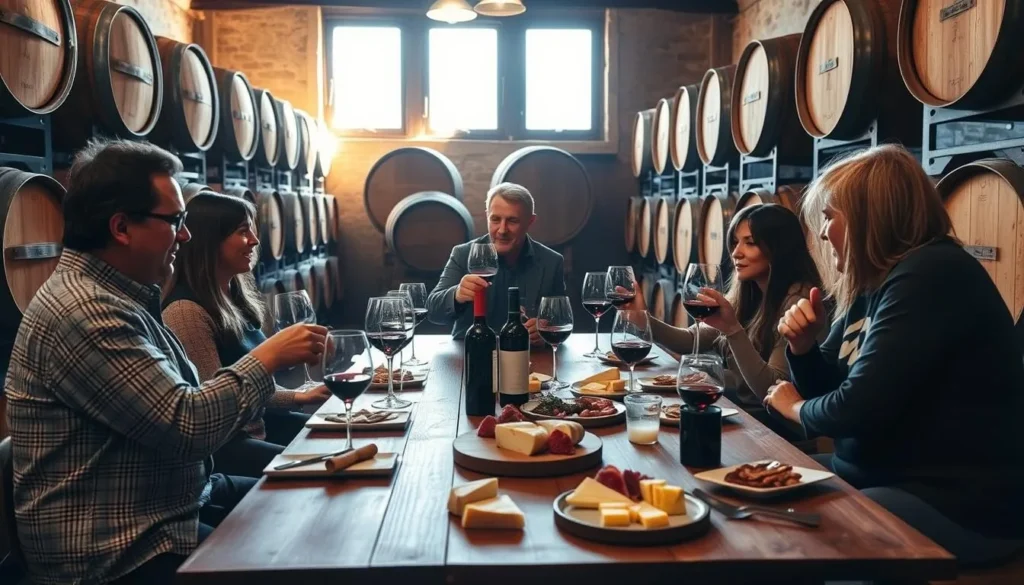
Wine Tasting Experiences and Tours
Rioja offers a variety of wine tasting experiences, ranging from casual drop-in tastings to comprehensive guided tours that include paired food. Visitors can sample different types of Rioja wines, including young wines (Joven), Crianza, Reserva, and Gran Reserva classifications. Specialized tasting experiences, such as vertical tastings (sampling different vintages of the same wine) or comparative tastings of wines from different Rioja sub-regions, are also available.
| Type of Wine | Aging Process | Characteristics |
|---|---|---|
| Joven | Minimal aging | Fruity, fresh |
| Crianza | Aged for at least 1 year in oak | Balanced, smooth |
| Reserva | Aged for at least 3 years, with 1 year in oak | Complex, rich |
To make the most of your wine tasting tour, it’s recommended to book in advance, consider transportation options, and pace yourself throughout the day. With these tips, you’ll be able to fully enjoy the wine experiences that Rioja has to offer.
Natural Wonders and Outdoor Activities
For those looking to venture off the beaten path, La Rioja presents a plethora of opportunities to connect with nature. This region is not just about wine; it’s also a place where you can enjoy a variety of outdoor activities amidst stunning natural landscapes.
Sierra de Cebollera Nature Reserve
The Sierra de Cebollera Nature Reserve is a significant part of La Rioja’s natural heritage, offering a way to experience the region’s diverse flora and fauna. As you explore this reserve, you’ll find it’s a bit of a hidden gem, with trails that cater to different levels of hikers. The reserve is home to a variety of wildlife and plant species, making it a fascinating place to explore.
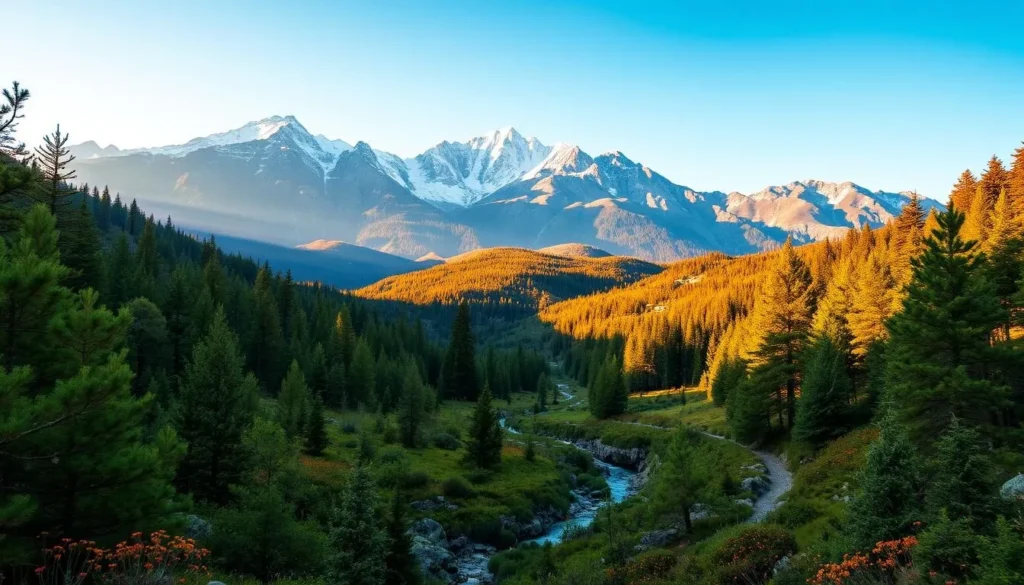
Thermal Baths of Arnedillo
Located in the heart of Rioja Oriental, the Thermal Baths of Arnedillo are a natural wonder that offers a unique outdoor experience. The Pozos de Arnedillo, as they’re known, are open-air thermal bathing pools carved into the stone bank of the River Cidacos. This natural hot spring is a great place to relax, with temperatures ranging between 30-40°C. You can visit at any time of day, enjoying a refreshing morning soak or a romantic evening dip under the stars. Be aware that the pools have a slightly sulphurous smell, but an outdoor shower is available for rinsing off afterwards.
Where to Stay in Rioja
Rioja, a region famous for its wine, also offers a diverse range of accommodations to suit every traveler’s needs. Whether you’re looking for luxury, charm, or convenience, you’ll find the perfect place to stay in this beautiful Spanish region.
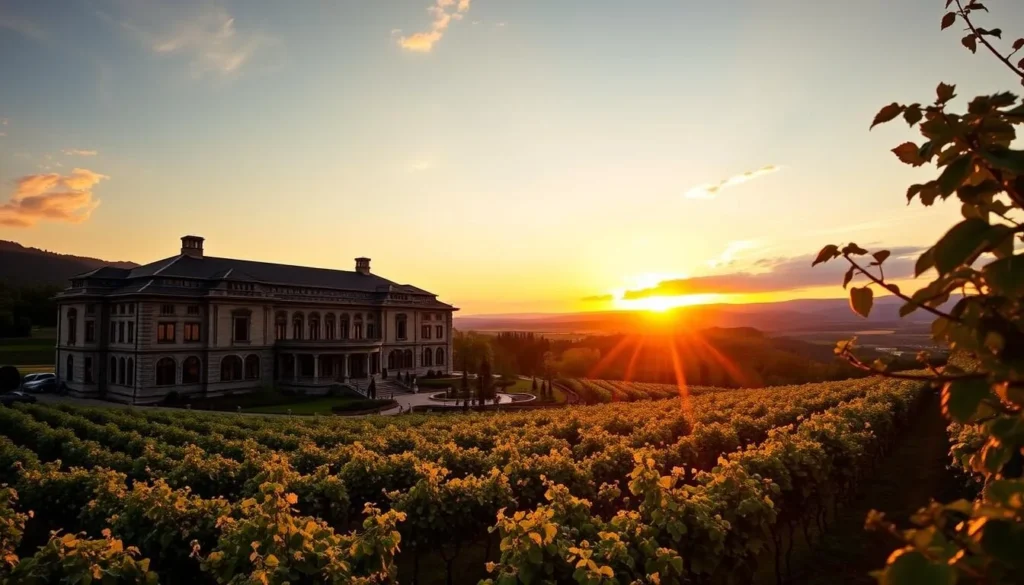
Luxury Wine Hotels
For those seeking a luxurious experience, Rioja’s top wine hotels offer world-class amenities and services. Hotel Marqués de Riscal is a standout example, combining luxury with a deep connection to the region’s wine heritage. These hotels often provide exclusive wine tastings and tours, making your stay an integral part of your Rioja experience.
Charming Boutique Accommodations
If you’re looking for something a bit more intimate and characterful, Rioja’s charming boutique hotels are the way to go. Hotel Arrope in Haro and Casa Grande Hotel in Grañón are excellent choices, offering comfort, style, and a more personalized experience. Staying in these smaller properties not only provides a cozy atmosphere but also insights into local life and culture.
Rioja Gastronomy Beyond Wine
The region of Rioja is not just about wine; it’s also a haven for food enthusiasts. As you explore the area, you’ll find a rich gastronomy that complements its renowned wines.
Traditional Riojan Dishes
Rioja’s culinary identity is deeply rooted in its traditional dishes, which often feature locally sourced ingredients. You can expect to find hearty meals that warm the soul, alongside innovative recipes that put a modern twist on classic flavors. The region is particularly famous for its tapas culture, where small plates of food are served in bars and restaurants, often accompanied by a glass of wine or a cold beer. Some must-try dishes include patatas a la riojana, a delicious potato stew, and chuletón de buey, a generous serving of beef ribs.
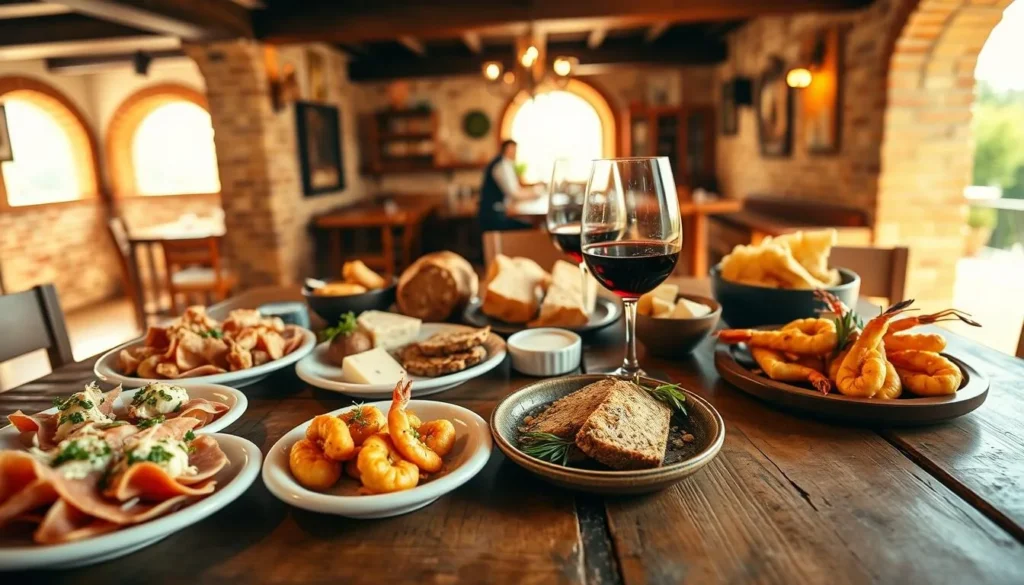
Top Restaurants in the Region
When it comes to dining in Rioja, you’re spoiled for choice. For a truly exceptional culinary experience, head to Hector Oribe in Paganos, near Laguardia, known for its creative interpretations of Riojan classics. In Haro, Los Berones offers an interesting fusion of local specialties with Latin American influences, making it a standout. For a more casual meal, the tapas scene in Logroño’s Calle Laurel is not to be missed, with each bar specializing in specific tapas. Additionally, the restaurant at Hotel Los Agustinos in Logroño provides a high-end dining experience in a historic setting, serving traditional dishes with a modern twist.
Other top recommendations include Amelibia in Laguardia and Terete in Haro, both offering unique dining experiences that showcase the best of Riojan cuisine. Whether you’re in the mood for fine dining or casual tapas, Rioja has something to satisfy every palate.
Conclusion: Planning Your Perfect Rioja Itinerary
With its rich history, stunning landscapes, and world-class wines, Rioja is a destination that promises an unforgettable experience. As you plan your trip to this beautiful region, consider how to make the most of your time. For a 4-day itinerary, you can explore the wine country, visit the fascinating monasteries of Yuso and Suso, and stop in the town of Santo Domingo de la Calzada, an important step in El Camino de Santiago.
The best months to visit Rioja are September and early October for the wine harvest season, or from March to July for a more relaxed atmosphere. You can choose to stay in one hotel or move between different accommodations to be closer to various wineries. Whatever your itinerary, Rioja’s relaxed atmosphere and exceptional wines will make your trip unforgettable. Take your time to savor the region’s cuisine and wines, and enjoy the natural beauty that surrounds you.
The above is subject to change.
Check back often to TRAVEL.COM for the latest travel tips and deals.
